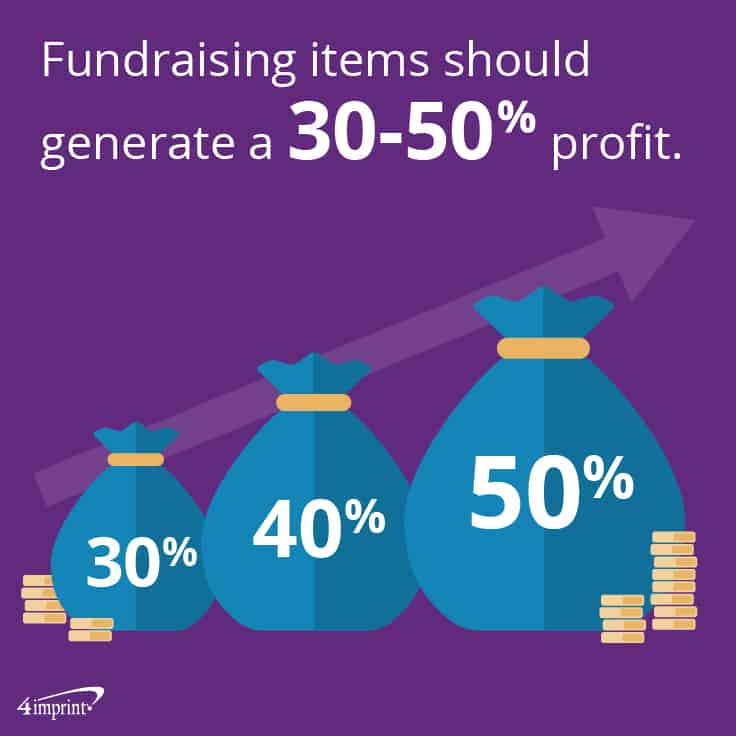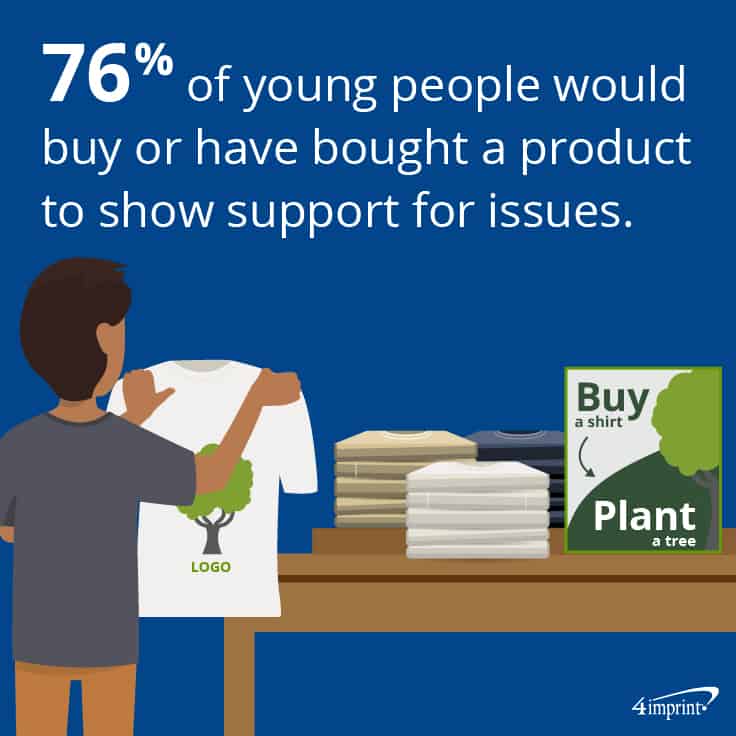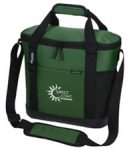Many people think of promotional items as something given to thank donors and volunteers. But these giveaways do more than show appreciation—they also spread brand awareness. And they feature your brand—whether you are a nonprofit organization or a for-profit that is supporting a cause. Selling promotional products offers multiple benefits:
- Raises revenue
- Complements your events
- Encourages supporter or customer engagement
- Increases visibility
In this edition of our Blue Papers®, we discuss best practices for selling fundraising promotional products that will bring in additional revenue to help carry out your mission.
Start with a goal

If you decide to start selling promotional products, first consider your goal. What are you trying to achieve? This will help you select products and sales venues, but it will also help you measure your fundraiser’s success. You may choose to sell merchandise for:
- Specific purchases: Are you buying new equipment? Paying off an unexpected expense? Setting a concrete fiscal goal can encourage supporters to buy your items.
- Special event items: Are you hosting a gathering or taking part in a community event? Offering a special one-time-only item can help you raise additional funds—especially if the item is a limited edition.
- General fundraising: You can raise a set amount of money or have a continual funding source by selling T-shirts, bags and bracelets.
In addition to selling used books and hand-knitted bookmarks made by a community member, the Airdrie Public Library in Alberta sells branded tote bags as part of its yearly fundraising efforts. The bags are available for purchase at the front desk.
“When people buy the bags, it goes into the general fund,” said operations manager Kelly Kirkpatrick-Lauzon. The general fund covers the cost of everything from staff wages to paying for new library materials.
Pick your products
To maximize sales, it’s important to consider your audience, your brand, and where you’ll be selling your products.
Relate it to an event
Frequently, events lend themselves to a themed item—like selling water bottles at a charity walk or pet bowls at a fundraiser for animal rescues.
Miller Well Servicing Ltd. in Weyburn, Saskatchewan, is a long-time supporter of the Weyburn Artistic Swimming Club. The company recently sold an item that lit up the night and brought a smile to supporters.
“We lost the local movie theatre about a year ago,” said safety coordinator Abby Kradovill, who also serves as the president of the swimming club. “We all miss that venue, so we figured we’d bring in a screen and do a drive-in.”
The event was extremely popular, with more than 100 cars at their most recent event. Along with raising money from tickets and snacks, the organization also sold light-up wands—which ended up being a three-way win of funding, fun and safety.
“We rebranded the swim club this year, and the wands helped us get our new brand out,” Kradovill said. “We had a bunch of kids running around and having fun with them, and they kept people safe as well.”
Boost your brand
If you’re going to sell fundraising promotional products over the course of months or years, it may be better to select something that uses your brand as a theme. That will help keep the product relevant. For example, if your mission is environmental, a plant will show off your brand and appeal to your supporters.
You can also select popular items like T-shirts, hoodies and bracelets using your nonprofit’s cause colour. As a bonus, these highly visible items can also give your brand a boost every time supporters use or wear them.
Interest your audience
In some cases, your best choices are related to the audience you’re selling to:
- Low-cost items: Budget-friendly items, like lollipops, can be sold for double or triple your cost while remaining at a price point almost any supporter can afford. Items like this work well for school fundraisers or any event where your audience includes a wide range of ages.
- High-end items: Offering a small number of co-branded high-end items, such as jackets, gives buyers an opportunity to get a special item while supporting their favourite cause.
- Evergreen items: Clothing, bags, bracelets, keychains and drinkware items are always popular when sold at events or online.
Show products at their best
Have a professional photographer shoot and edit product photos to enhance the look of an online store. Quality photography also makes it easier to generate interest on social media platforms.
Pick your prices
Depending on the price you pay for each item, a good rule is to price to the products so you earn a profit of 30-50% on each item. If you’re unsure whether your price might be too high, consider polling people on what price they would be willing to pay for the item. You can also compare prices with similar nonprofit stores.

To bring in additional funds, ask buyers whether they wish to make a donation in addition to their purchase.
Get the word out
Make people aware that they can buy your merchandise by:
Sharing on social media
If financially feasible, consider buying social ads in addition to writing posts about your merchandise. Why? It’s estimated 77% of millennials have made a purchase after seeing a Facebook® ad. That makes social media an ideal place to start your marketing efforts.
Social media can also be an excellent way to catch the attention of new supporters online. When you’re selling promotional products to someone, ask them to take a photo, post it online and tag your organization. You can even suggest a special hashtag.
Reaching out to supporters and customers
If you create an online store, add a link on your website home page. You can also add an option to invite supporters to buy merchandise when they make a donation. If you’re a for-profit, getting the word out to customers online and at your office can reap rewards for your cause and your business—76% of young people have bought or would consider buying a product to show support for the issues a brand supports.

You can also raise awareness for fundraising promotional products by sharing them in your newsletter or email. And when people buy your products online, give them an option to sign up for updates about your organization. The person buying a shirt to support your cause today could be a volunteer or recurring donor tomorrow.
Getting in touch with the media
You can tie merchandise sales to important news events. For example, if you’re selling T-shirts to raise funds for a recent natural disaster, make the media aware of your efforts to help those affected.
Fundraising with big benefits
Selling promotional products creates multiple wins for your organization. Every fundraising promotional product gives you new opportunities to boost engagement—and that helps your organization and audience grow. Good luck!

